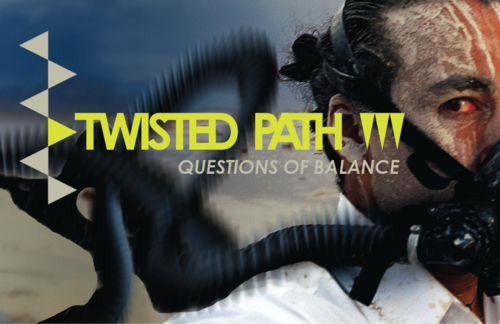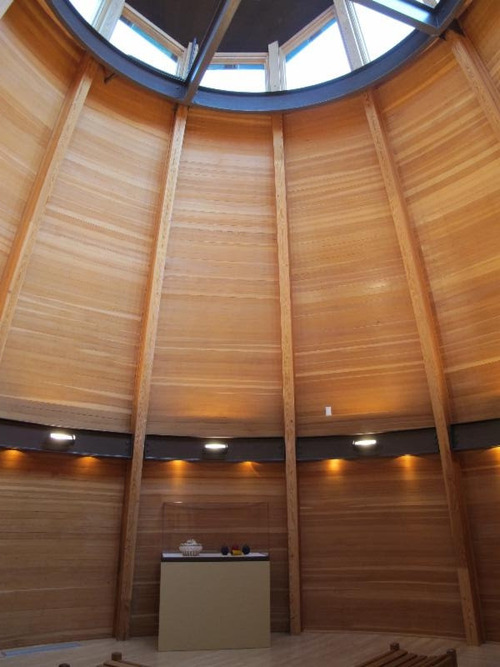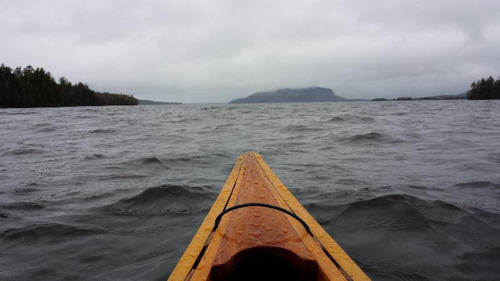Teamwork at its Best!
/The Abbe staff spent some time last week taking down a wall that has been up in our main gallery for 15 years. With this wall gone, we are one step closer to installing our new core exhibit, People of the First Light!
The Abbe staff spent some time last week taking down a wall that has been up in our main gallery for 15 years. With this wall gone, we are one step closer to installing our new core exhibit, People of the First Light!

The Abbe Museum has been awarded a $150,000 Museums for America grant from the Institute of Museum and Library Services (IMLS). The grant is 1 of 217 awarded to museum projects across the US – totaling more than $25 million – and will fund the design, fabrication, and installation of the Abbe’s new permanent exhibit, People of the First Light, which will open in the spring of 2016.
“We are beyond excited about this opportunity, especially because of what it means for the Abbe in terms of preparing for the immediate future,” said Abbe President/CEO Cinnamon Catlin-Legutko. “During the course of the past year in planning for our new strategic plan, numerous community conversations occurred and some of those resulted in identifying specific financial sustainability strategies that influence our exhibit planning efforts. The conversations all pointed to the need for a permanent exhibit, and thanks to IMLS, we’ll be able to give our visitors and communities exactly what they asked for!”
Located in the Abbe’s downtown Bar Harbor facility, the exhibit will occupy approximately 2,100 square feet. Its content, artifacts, images, and interactive and participatory elements will be informed by the Abbe’s recently adopted interpretive framework and input from its Native Advisory Council and Native advisors.
People of the First Light will use design and content to bring the visitor into the Wabanaki universe. The cyclical nature of time will be strongly reflected in the design of the exhibit, and time depth will be presented in a non-linear pattern. The exhibit will incorporate the many ways of knowing about Wabanaki history and culture.
“Thanks to this grant, the Abbe will enhance current and future exhibit and programmatic interpretations, expose visitors to multiple voices in presenting information about the Wabanaki people – with the Wabanaki voice as the primary one – and give visitors an understanding of how the colonization of Maine has impacted and continues to impact the Wabanaki people and their culture,” said Julia Clark, director of collections and interpretation.
While the exhibit is considered permanent (15-20 year cycle), it will be constructed so that topics can be easily updated to reflect changing events, and the evolving conversations with Wabanaki advisors will be a guide if updates are needed. Audiences will find their experience relevant and engaging each time they visi People of the First Light.
The Institute of Museum and Library Services is the primary source of federal support for the nation’s 123,000 libraries and 35,000 museums. Its mission is to inspire libraries and museums to advance innovation, lifelong learning, and cultural and civic engagement. IMLS’s grant making, policy development, and research help libraries and museums deliver valuable services that make it possible for communities and individuals to thrive. To learn more, visi www.imls.gov.
“Greatest Mountain is the fascinating and engaging result of James's unique perspective as an artist, historian, guide, and Penobscot tribal member,” said Julia Clark, director of collections & interpretation at the Abbe. “Together, these result in a view of Katahdin unlike any other.”
"I grew up at Township for most of my life. I was taken from my mother when I was three months old—I was told that she left me in a crib for three days, with no food or water. My aunt found me, barely alive, and they took me away. That was the first time I went to my foster family. I was nine when I was taken to my biological father’s house, and was there for just a few short months. I went to another foster family, where I suffered a lot of abuse.
I discovered drinking as a teenager—as most teenagers do—but it was never really a problem for me. After my second son was born and passed away, I didn’t care anymore. And after my daughter was born, I got into the drugs. I stayed into the drugs for eleven years, doing anything from snorting to I.V. use. Once my children were living with their fathers, I’d lost everything. I moved in with one of the biggest drug dealers around.
The drum really helped me on my road to recovery. The drum is very powerful medicine in and of itself. My partner said we needed female voices in another group, so I said I would try. I just wanted to be around the drum. They took me to a drum practice on Indian Island, and the power of that drum beat—the music, the vocals that come with drumming—it opened my mind, my spirit to everything around me.
If I didn't have the drum or my partner’s family, I don’t know where I’d be. I always felt the drum at powwows and socials, but I never sat down and learned the songs—the words, and what they mean. The combination of it all was very powerful for me. I owe a lot to that family—they are an amazing family. They’ll help anybody. For them to take an interest in me, and to show me the right way, the right path that I should be on—that was amazing." April Tomah, Passamaquoddy at Indian Township
"I think it’s important for us to remember that we are matriarchal people. That is who we have been for thousands of years. The fact that women’s role has been diminished over the last 500 years is not our way, it’s the Western culture’s way. And if we’re going to truly survive, we need to get to the point where we respect our women, we believe in our women, and we take care of our women. We are the ones who have been entrusted as givers of life. I’m not saying that men’s roles are diminished, we just need to be reflective of and remember who we are. I think that’s important." Elizabeth Neptune, Passamaquoddy at Indian Township
"Women are still the leading force here. We’re a matriarchal society, and people have always followed the women’s lead. I think the women are still pretty strong in that—it’s set in our DNA. Women were the givers of life, we nurtured the children, and today, we’re really still pushing to make our people complete again. We’re the caregivers—if there’s going to be healing, we’re the ones to do it. I’m not saying that men are any less, because we’re all equal, but that’s what our role is. We’ve been given a very special gift, by being able to give life—we’re Life Givers, and with that comes great responsibility. Whenever I go to something having to do with community members voicing concerns, I take a look around, and I always see more women." Plansowes Dana, Passamaquoddy at Sipayik
 |
| Museum Educator George Neptune, Passamaquoddy, opened the reception with a blessing. |
 |
| Julia Clark, director of collections & interpretation, talked about how we were able to make Coming Home happen. |

 |
| Cinnamon Catlin-Legutko, Abbe president and CEO, praised all those responsible for making the exhibit such a success. |
 |
| A delicious spread of food was provided by the Culinary Arts Committee. |
“By sharing this story, I hope to show the strength of our people,” said Neptune. “These women are just a few of many who work every day to heal within our communities. It is my hope that when you read their stories, you also are, in some way, healed.”Storytelling is a crucial practice in countless Native American cultures. Many tribes did not use a written language system, so storytellers were the keepers of history, knowledge, and tradition. Stories were meant to teach, whether about creation, survival, respect, or even magic.
“This exhibit is not only a chance to learn through traditional and cultural knowledge, but to see amazing objects that are coming back to Maine after decades or centuries away,” said Julia Clark, director of collections & interpretation. “Wabanaki community curators chose an intriguing and diverse selection of objects, many very different from those in the Abbe's collection. This exhibit is a unique opportunity for our visitors to learn about Wabanaki culture directly from Wabanaki people and objects, rather than filtered through the lens of the museum curator.”From baskets to beadwork, woodcarvings to birchbark canoes, tools or artwork, many pieces of Wabanaki material culture have ended up in museums far away from the Wabanaki homeland, where it is difficult for community members to see these pieces of their history and culture. In recent years, the Abbe has spoken with several Wabanaki people about Micmac, Maliseet, Penobscot, and Passamaquoddy collections residing in museums outside of Maine, and whether it would it be possible to bring pieces “home” for a while so that community members could study them more closely.
“Familiar objects can often trigger memories and spur curiosity,” said Cinnamon Catlin-Legutko, Abbe Museum’s president and CEO. “It’s the Abbe’s hope that this exhibit is a beginning, and that there will be future exhibits where pieces journey back from farther afield - across the United States and Canada, into Europe, and perhaps beyond.”An opening reception, which is free and open to the public, will be held on February 5, 2015 from 5 – 7 pm.


